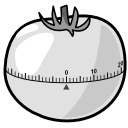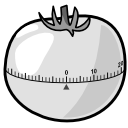 This is the first post in a series about applying the Pomodoro Technique® to Scrum and for development.
This is the first post in a series about applying the Pomodoro Technique® to Scrum and for development.
Each post covers one of the Pomodoro Technique® objectives. The first objective is to find out how much effort an activity requires.
I started using the Pomodoro Technique® a couple of weeks ago. At first simply trying to work focused for 25 minutes with 5 minute breaks. I didn’t do this all the time, though, as I didn’t feel my working environment allowed it.
Today, I primarily use the Pomodoros when developing. When I get a chance, I will definitely apply it to other tasks as well, such as writing and studying.





 Communicating is inevitable at work, and good communication skills are key to happiness and success.
Communicating is inevitable at work, and good communication skills are key to happiness and success.
 This is the third post in a series about applying the Pomodoro Technique® to Scrum and for development.
This is the third post in a series about applying the Pomodoro Technique® to Scrum and for development.![pomodoro[7] pomodoro[7]](https://lh6.ggpht.com/-VGHuNmYmL9c/T0LIucDyRyI/AAAAAAAAALM/X9yreRZicpI/pomodoro%25255B7%25255D_thumb%25255B1%25255D.png?imgmax=800) This is the second post in a series about applying the Pomodoro Technique® to Scrum and for development.
This is the second post in a series about applying the Pomodoro Technique® to Scrum and for development. This is the first post in a series about applying the Pomodoro Technique® to Scrum and for development.
This is the first post in a series about applying the Pomodoro Technique® to Scrum and for development.